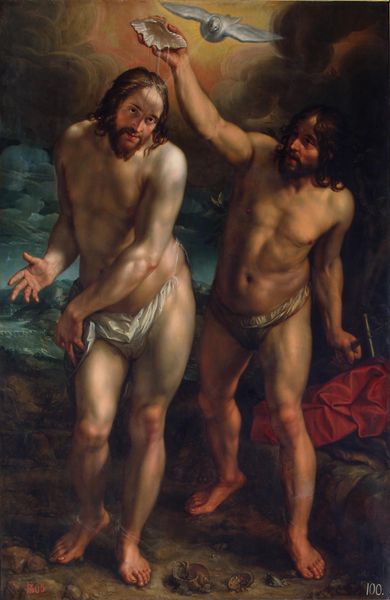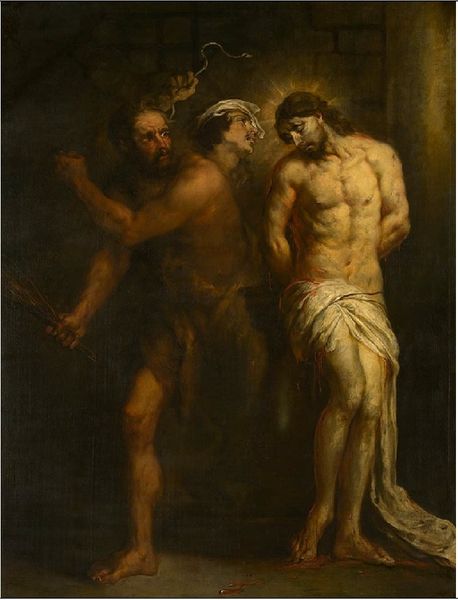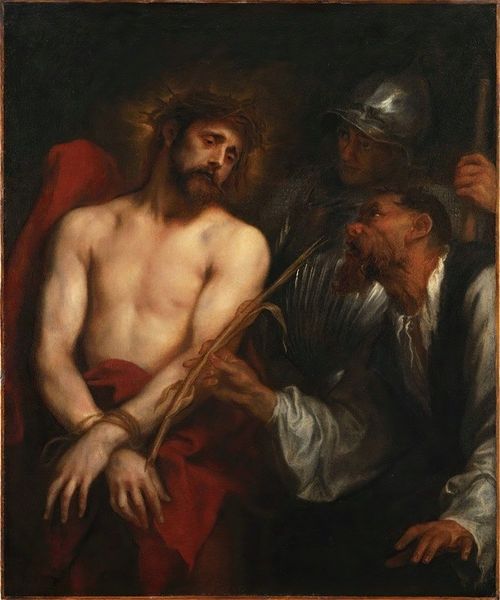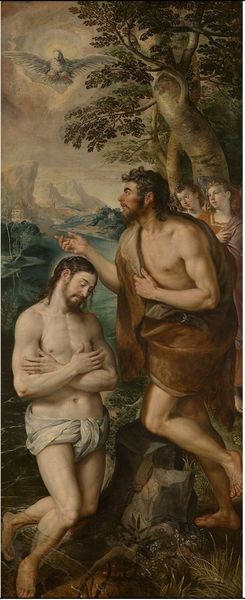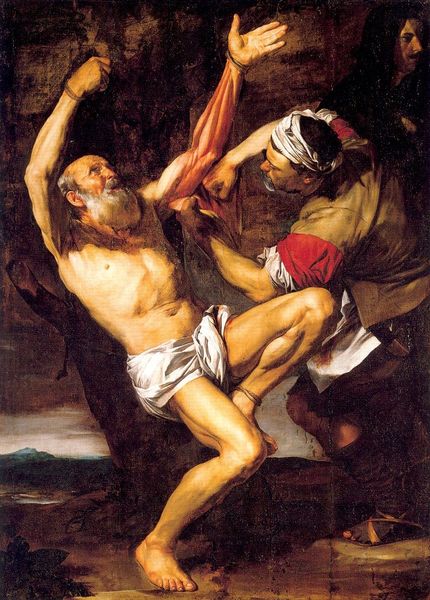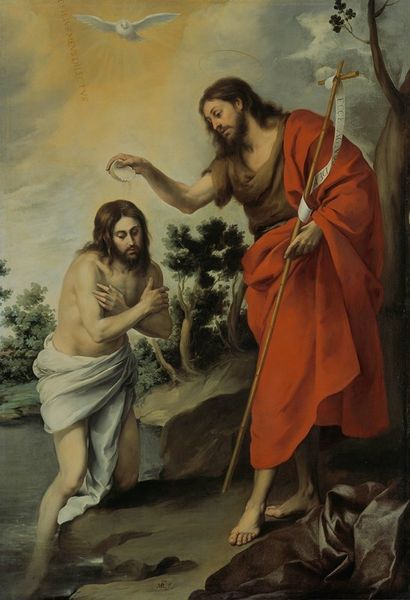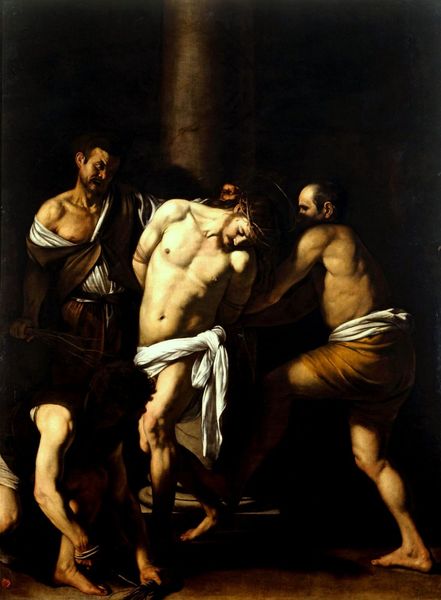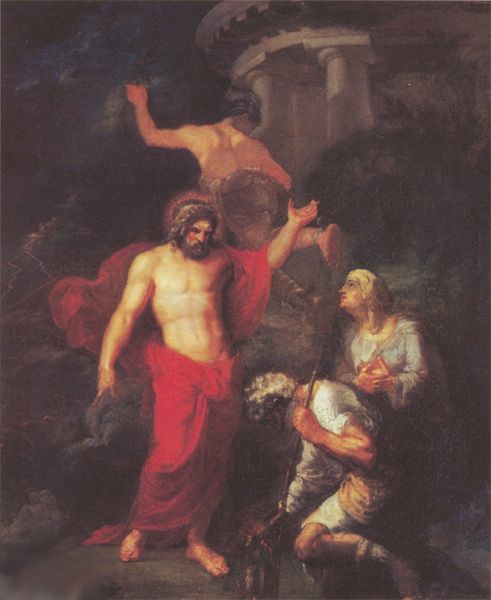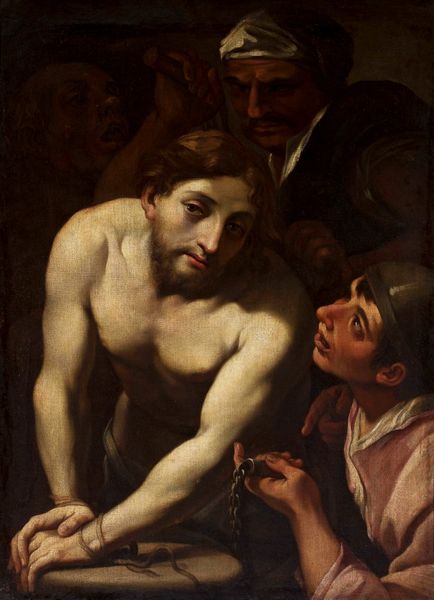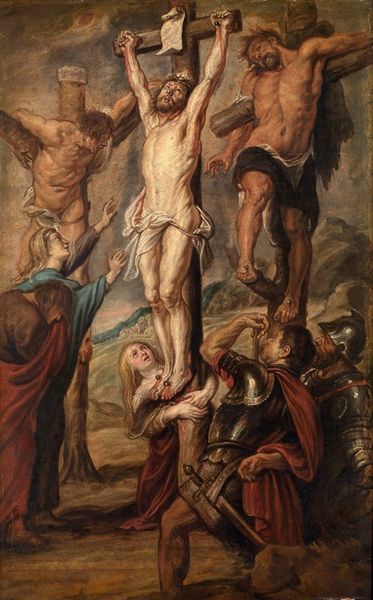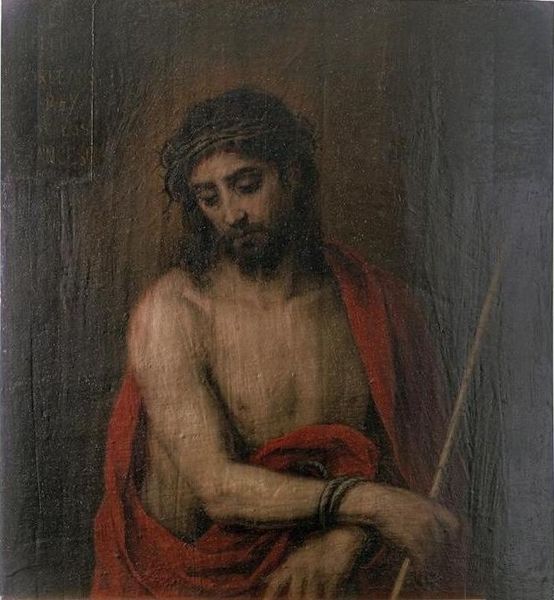
painting, oil-paint
#
painting
#
oil-paint
#
figuration
#
oil painting
#
romanticism
#
history-painting
Copyright: Public Domain: Artvee
Curator: This is Corot’s "Jésus et Saint-Jean," painted circa 1844-1845. He's captured the moment of Christ's baptism in oil on canvas. It feels incredibly serene, almost subdued. Editor: The tonal range is limited and tight; notice how the relatively dark and desaturated colors generate an unusual and almost austere atmosphere for such a loaded subject. The structural scaffolding feels really muted, particularly how the forms are gently molded into the aqueous surround. What else stands out? Curator: For me, it's the layering of symbolic weight, baptism marking the symbolic washing away of sin and the commencement of Christ’s ministry, captured at a pivotal instant, a visual declaration of profound spiritual and earthly consequences rippling outwards. The rugged John and almost frail Christ. What emotional narrative do you glean from these compositional choices? Editor: The artist sets up a compelling contrast between John’s rough, grounded pose, rendered in earth tones, and Christ, depicted in lighter, almost luminous shades. This color contrast emphasizes their distinct roles. However, there is also the striking structural repetition of curves. The circular placement of John’s hand with the Christ’s halo, echoed in their postures and linked via implied visual vectors; all serve to suggest a dialogue beyond mere submission. Curator: That resonates with the cultural narratives surrounding ritual cleansing and renewal. But also consider the use of figuration; here Corot paints near life-size nudes to invoke earlier iconic baptisms within Western Art history, but within a mid-nineteenth-century visual culture—all part of Romanticism's re-engagement with spiritual themes. The Romanticism designation accounts for the emotionally charged handling. Editor: The loose brushwork enhances this atmospheric mood, further. By dissolving precise details into the soft overall form, the effect minimizes distinct outlines while encouraging introspective meditation on the sacred event. Curator: I agree. Its muted palette and the almost dreamlike composition give us an enduring image that prompts us to consider baptism not just as historical event, but also as a potent cultural and religious symbol, endlessly refreshed. Editor: It's certainly a demonstration of how formal analysis illuminates symbolic readings and vise-versa; and through careful structuring and brushwork, Corot successfully weds formal devices with historical-cultural material to achieve a work that resonates in unexpected ways.
Comments
No comments
Be the first to comment and join the conversation on the ultimate creative platform.
